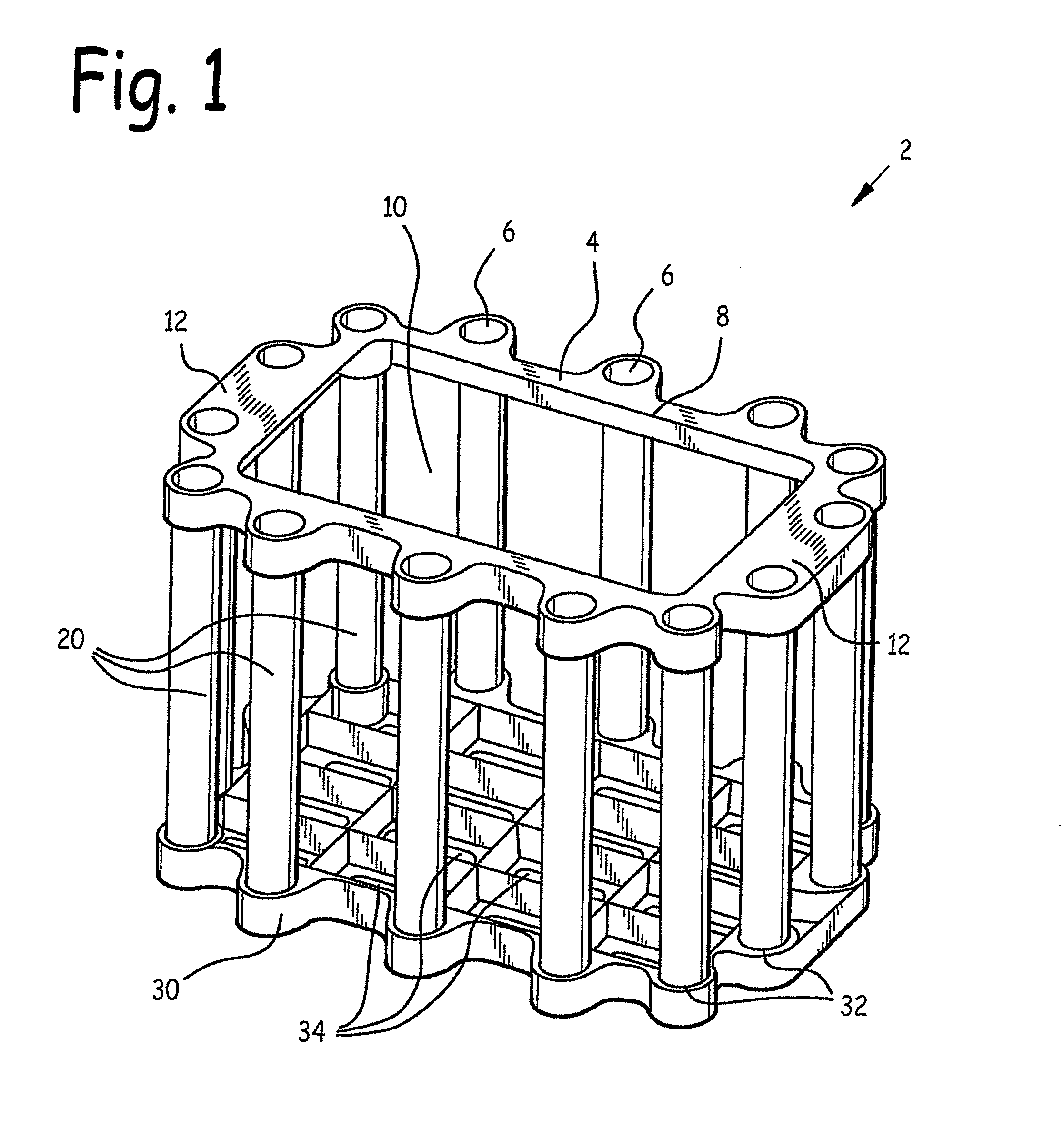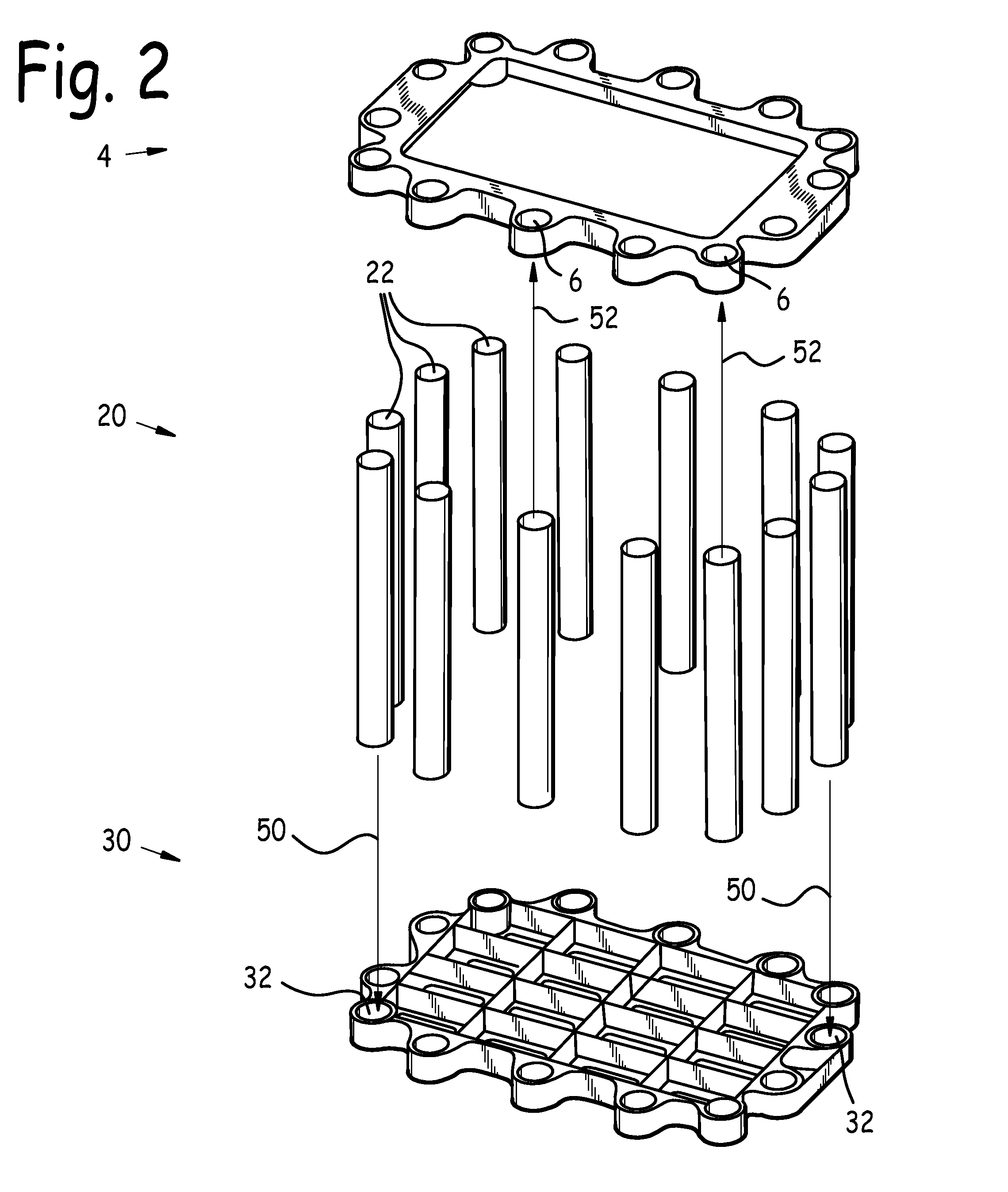Fishing rod caddy
- Summary
- Abstract
- Description
- Claims
- Application Information
AI Technical Summary
Benefits of technology
Problems solved by technology
Method used
Image
Examples
Embodiment Construction
[0026]Referring now to FIG. 1, a front left quarter isometric view of fishing rod caddy 2, fishing rod caddy 2 is made up of three principal components: substantially planar top 6, elongate columns 20, and substantially planar bottom 30. Top 4 comprises a plurality of top receptacles 6 disposed around its perimeter, each sized to frictionally admit a corresponding column 20 upper end. Bottom 30 comprises a bottom receptacle 32 corresponding to, and disposed directly below, each top receptacle 6. Each bottom receptacle 32 is sized to frictionally admit a corresponding column 20 lower end. Bottom receptacles 32 are disposed around the perimeter of bottom 30.
[0027]FIG. 2 is a front left quarter exploded isometric view of fishing rod caddy 2. FIG. 3 is a front cross-sectional view of fishing rod caddy 2. FIG. 3 is a front cross-sectional view of a fishing rod caddy 2. FIG. 4 is a top view of fishing rod caddy 2. Referring now to these figures, fishing caddy 2 is assembled by frictionall...
PUM
 Login to View More
Login to View More Abstract
Description
Claims
Application Information
 Login to View More
Login to View More - R&D
- Intellectual Property
- Life Sciences
- Materials
- Tech Scout
- Unparalleled Data Quality
- Higher Quality Content
- 60% Fewer Hallucinations
Browse by: Latest US Patents, China's latest patents, Technical Efficacy Thesaurus, Application Domain, Technology Topic, Popular Technical Reports.
© 2025 PatSnap. All rights reserved.Legal|Privacy policy|Modern Slavery Act Transparency Statement|Sitemap|About US| Contact US: help@patsnap.com



